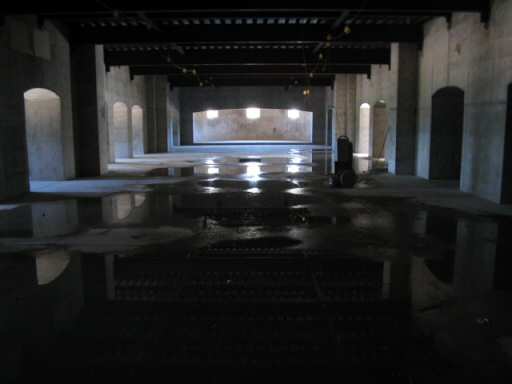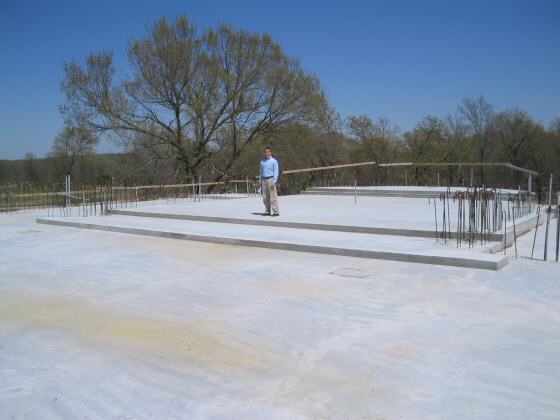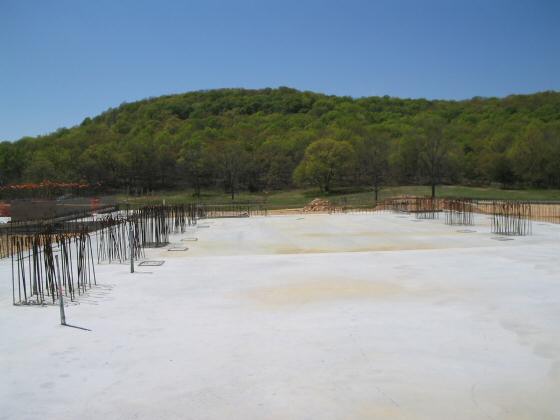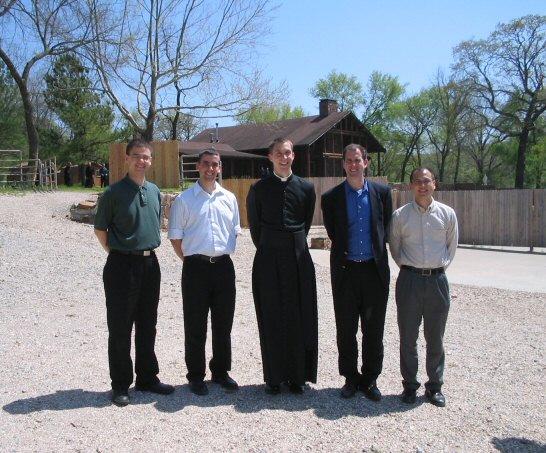
For the week following Easter Sunday, the seminarians were allowed a week of vacation. A group of six seminarians, including myself, decided to use that time to take a trip down to Clear Creek Benedictine Monastery in Oklahoma, in the Diocese of Tulsa. I believe this monastery, which was only founded in 1999, represents a great hope for the future of the Church in this country. The story of this monastery's foundation starts in the 1970s, when a professor at Kansas University by the name of John Senior, along with a few colleagues, decided to start teaching a humanities curriculum concentrating on the traditions of Western Civilization. This program became a great success among students, and amazingly, led to numerous conversions to Catholicism (including the conversion of Fr. Jackson, our seminary rector). Desiring to hear Gregorian chant and observe traditional monastic life, many of the students decided to take a trip to Fontgambault Monastery in France. Supposedly, on one of these trips something like 38 out of 40 students converted to Catholicism after visiting the monastery. Not only did students convert, but some decided to enter the monastery themselves. It is these Americans-turned-monks, along with some of the French monks, who were chosen by the abbot of Fontgambault to return to the United States in the 1990s to found Clear Creek Monastery. Among the 12 founding monks was a former US Marine, a former KU football player, and a former valedictorian from the French naval academy. Since the foundation in 1999, the number of monks has reached 23, with the 24th entering in a matter of weeks. In fact, while we were at Clear Creek, we met three very happy and devout young men who were discerning a vocation with the monks.
It's hard for me to describe what it's like being at the monastery, because its effects are so subtle. The day starts at 5:15 AM for the Office of Matins, which consists in the chanting of Psalms, scriptural readings, and lessons from the Church Fathers. For every community function, a monk rings the bells, first to summon the monks, and then to start the function. One of the nice things about the monastery is that you don't need a watch. The day is run by the bells, and it only takes a few days to fall into the rhythm of life there. Matins lasts for about an hour, and it is immediately followed by Lauds (which, along with the rest of the hours of the office, consists mostly in the chanting of more Psalms). After Lauds comes low Masses, which are celebrated by each individual priest in the community (I think they have about 9 priests). Many of the Catholics who live in the vicinity show up daily for these Masses, and also sometimes for Vespers in the evening. The office of Prime is at 8:15 AM, followed by breakfast (which the monks eat standing up). Terce, immediately followed by a sung Mass, takes place at 10:00 AM. After this Mass is a period that can be used for study or manual labor. Then comes Sext at 12:50 PM, immediately followed by lunch, which is the principle meal of the day. There is no speaking during meals. Instead, a monk reads to the other monks while they eat, usually something from the lives of saints, recent papal instructions, or some sort of inspirational reading. The food, by the way, is excellent, since the monks raise a lot of their own food, providing them with all sorts of fresh produce. They also make their own cheese. Following lunch is recreation, during which the monks often go for a walk as a community. Since we were not allowed to talk to the monks (except for the guestmaster), I don't know what they talk about, but they appeared to be having a great time! After recreation comes the office of None, and then a couple hours of manual labor. The monks had us cutting down trees to thin out a section of forest on their property, which we all enjoyed. Manual labor is very important to the Benedictines, since they see it as a form of prayer. This is followed by Vespers at 6:00 PM, then dinner later on, and then Compline at 8:25 PM. I suspect most of the monks are in bed by 9:30 PM so they can be well-rested to do it all again the next day.
While we were there, we were invited to dinner at local widow's house, who treated us very kindly and fed us very well. She said when she found out that the monks were coming to Clear Creek, she sold here house in California (where she was living), and bought a house in the area so she could be near the monastery. She is there every day for Mass and is much loved and prayed for by the monks. She also happens to be the mother of 10 children and the grandmother of 48. She is a very blessed woman!
While there is much more I could say about Clear Creek, I think I'll just leave you all to the pictures.
Clear Creek itself.

The new abbey church. Construction is currently on hold due to lack of funds. Plans for the church can be seen at the official Clear Creek Monastery website.

The crypt level of the new church.

The main level.


The monks have their own chickens...

and cows...

and sheep.

They are also growing an orchard.

The seminarians (not pictured: Joseph Lee).

The monks going to lunch (taken with the permission of Father Guestmaster).

If you would like to read more about the monastery, Benedictine monasticism in general, and Professor John Senior, see these links:
A history of Clear Creek's foundation.
Background information on Professor John Senior.